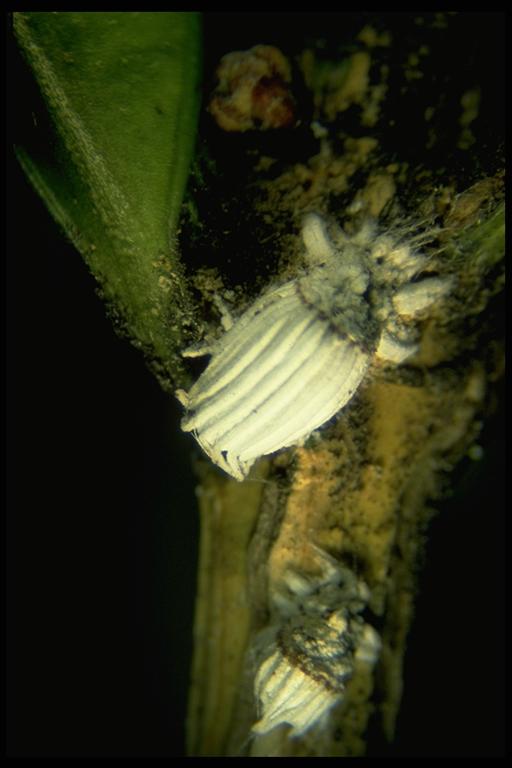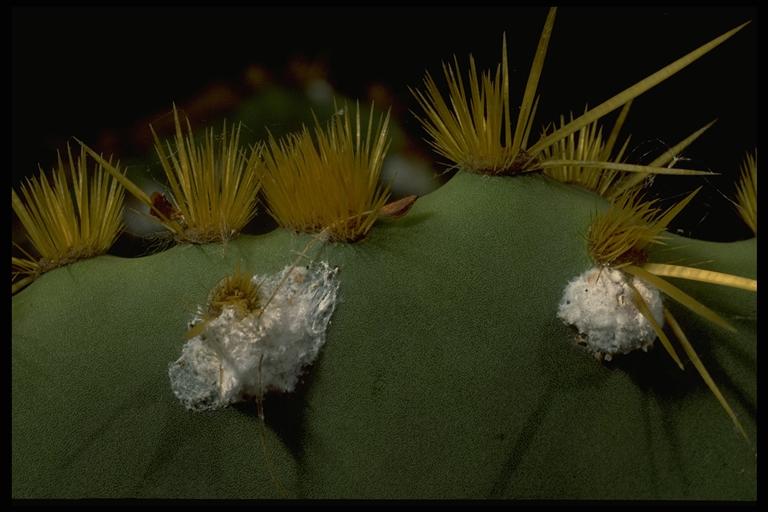
Cottony cushion scale, Icerya purchasi Maskell (Homoptera: Margarodidae). Photo by Drees.
Common Name: Cottony cushion scale
Scientific Name: Icerya purchasi Maskell (top), Dactylopius sp. Costa, bottom.
Order: Homoptera
Description: Adult female scale has a fluted cottony egg sac secreted from the body of the scale. Other Homoptera produce massive quantities of white wax, including some species of aphids, mealybugs, whiteflies and other scales. The cottony camellia scale, Pulvinaria floccifera (Westwood) is similar to the cottony cushion scale and occurs on camellia, English ivy, euonymous, holly, hydrangea, maple, mulberry, pittosporum, rhododendron, yew, and other ornamental plants.
The cochineal insect, Dactylopius coccus Costa (Homoptera: Dactylophidae), a cottony scale that resembles a mealybug and occurs on prickly pears cacti, is known in Texas history as the scale used by American Indians to make a crimson dye which was used to paint missionary buildings, particularly in the San Antonio area.
Life Cycle: Intermediate. Eggs in the egg sac hatch into six-legged “crawler” stages than move onto larger twigs and branches. They develop through several stages before becoming adults. They retain their legs and are able to move throughout their development.
Habitat, Food Source(s), Damage: Developing stages suck sap from the host plants, resulting in reduced plant vigor, defoliation and dieback of twigs and branches. Adults are unsightly and produce large quantities of honeydew on which the sooty mold fungus grows, turning infested plants of parts black. Host plants include apple, Boston ivy, boxwood, cypress, hackberry, locust, maple, oaks, peaches and plums (Prunus), pecan, pears, pine, pittosporum, pomegranate, quince, rose, verbena, walnut, willow and other woody ornamentals.

Cochineal insect, Dactylopius coccus Costa (Homoptera: Dactylopiidae), on prickly pear. Photo by Drees.
Pest Status: Large cottony scale of woody ornamental plants. Medically harmless.
For additional information, contact your local Texas A&M AgriLife Extension Service agent or search for other state Extension offices.
Literature: Borror et al., Johnson & Lyon 1988; Westcott 1973.